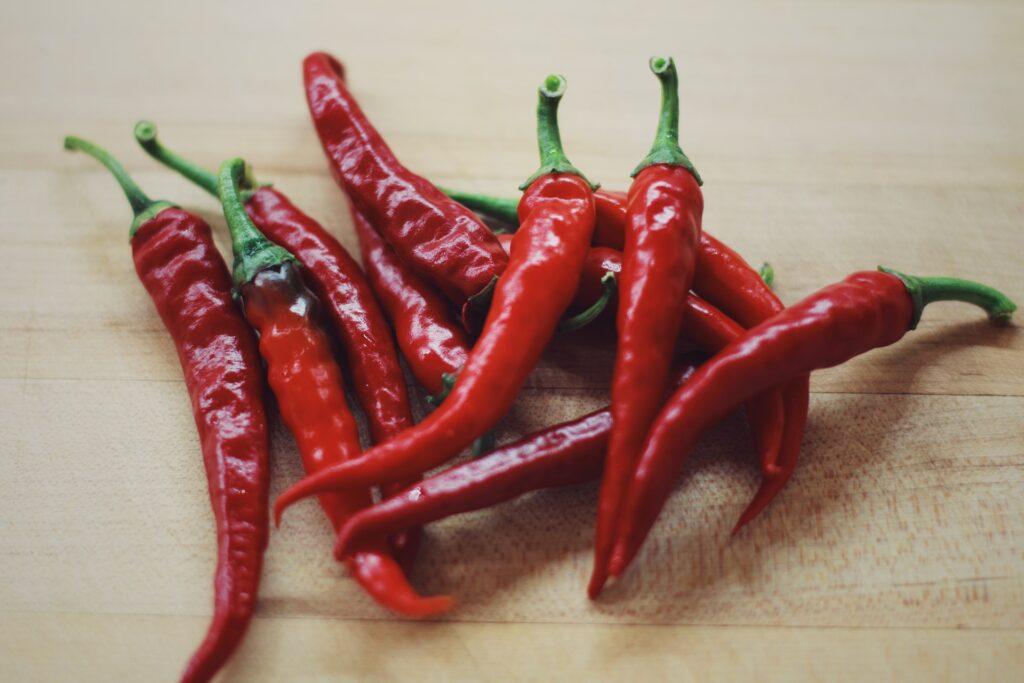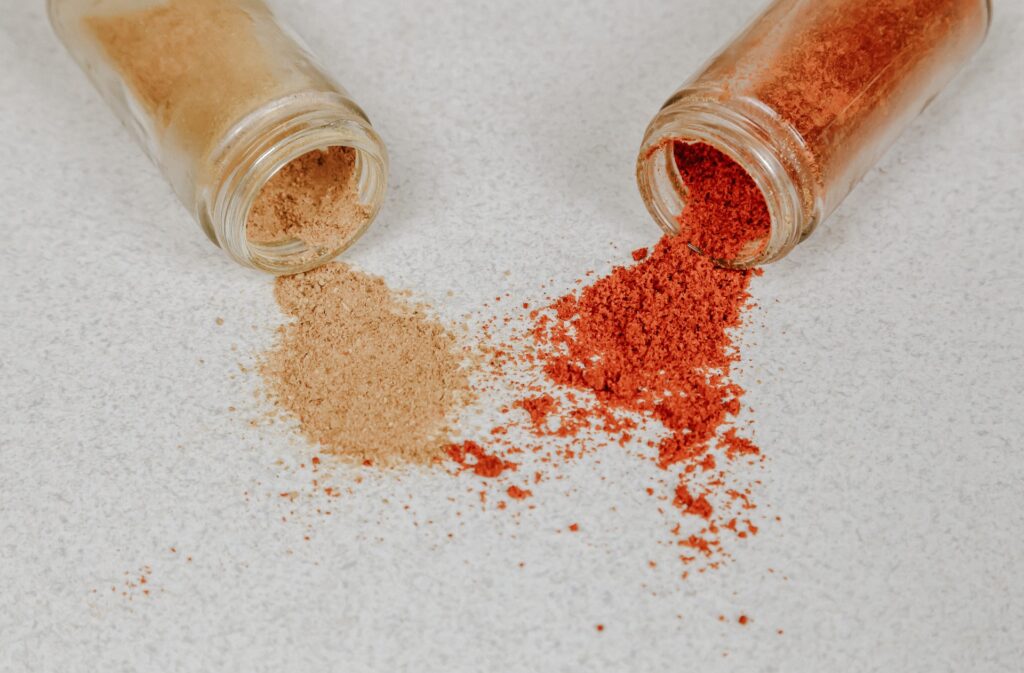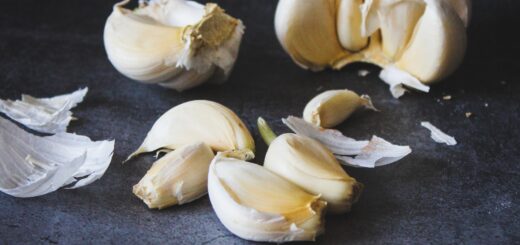4 Reasons to Get Spicy with Cayenne Pepper
Did You Know?
Cayenne is a small, long red pepper that grows in Central and South America, Africa, and India and has long been used for medicinal properties dating back to 7,000 years ago. Today, some research supports the claim of medicinal benefits from capsaicin, a compound that makes the pepper spicy and produces a burning sensation when ingested. This compound is present in all peppers and measured on the Scoville Scale at varying degrees of Scoville heat units (SHU). Just to give you a perspective of the two extremes, pure capsaicin is 15 million SHU and bell pepper is 0 SHU. So, cayenne fits in the middle scoring 30,000 to 50,000 units, Jalapenos 2500-8000units, and the California Reaper (the hottest pepper in the world) scores 1.4-2.2million units, right below pure capsaicin. Now, I am not suggesting you eat a California Reaper or pure capsaicin for health benefits, I am suggesting that you include cayenne pepper and any other peppers that fit your palate knowing of a health benefit or two that can improve your life. It makes for a great spice to include in your food and many cuisines around the world utilize it. However, besides tasty food, let’s look at 4 health benefits of capsaicin

4 Health Benefits of Capsaicin
- Ease pain
Capsaicin is already used for pain relief in the form of topical creams, gels, lotions, and patches. There are several pharmaceutical-grade options for people with arthritis pain, neuralgia, muscle strains, and aches because Capsaicin blocks pain signals while creating a mild burning and tingling sensation. One study published in the Osteoarthritis and Cartilage found that capsaicin was as equally effective as an NSAID (non-steroidal anti-inflammatory drugs).
2. May aid in digestion and gut health
The ability of capsaicin to help alleviate gut issues is related to multiple factors. One is that it can increase gut bacteria to rebalance a system affected by gut disorders. Secondly, it can protect the gastric mucosa by stimulating gastric blood flow and mucus secretion to heal and prevent gastric ulcers.

3. Promote Heart Health
The ability of Capsaicin to promote heart health is in its ability to reduce multiple factors that increase the risk for heart disease. In one study participants were given capsaicin capsules over 3 months and the results demonstrated a decrease in triglyceride levels, an increase in HDL (healthy cholesterol), and an anti-inflammatory component for patients with low HDL. Since low HDL is associated with a risk for heart disease, the researchers were able to credit capsaicin with a preventative benefit in those who consumed it.
4. High content of antioxidants
Peppers have been studied for having a high content of antioxidants and how these antioxidants can combat the development of chronic inflammation. One study compared the level of antioxidants in ginger, garlic, and pepper and discovered that pepper had the highest content of multiple types of antioxidants. I have often talked about the benefits of eating antioxidant-rich foods so now cayenne pepper can be part of your rotation.

What Should You Do About it?
Talk to your doctor first. Especially if you take certain medications or have a certain medical history. Over-the-counter topical use can be applied 3 or 4 times a day but check with your doctor to determine the appropriate dose. According to Mayo Clinic, there are certain considerations before use like allergies, and a medical history involving brain, heart, or blood vessel problems. If a doctor decides you may qualify for a prescription-grade topical patch, you must have it applied and removed at the medical facility. Be careful of putting the over-the-counter gels on wounds or irritated skin and do not get the gel, lotion, or ointment into your eyes. This also applies to the pepper for food, meaning if you choose to cut a fresh pepper, wash your hands before touching sensitive areas.

How To Make It SMART
SHORT- Implement cayenne pepper into your diet. This will be based on whether you like spicy foods or not. You can mix it into soups, marinades, salsa, and stew. If you want to use it topically, you can find a cream over the counter or as a high dose prescription from your doctor
MEASURABLE- This depends on what you are using it for. Topical use would be more measurable than oral use. Oral use is a healthy habit that compounds other habits to make an overall healthy lifestyle.
ATTAINABLE- Is this something you want to implement consistently? Is it possible to change? You can use cayenne pepper in the form of powder or fresh diced pieces in your meal and adjust according to the level of heat and taste
REASONABLE- Is it possible to implement? Can you start to include cayenne? Cayenne is used in many different food recipes for seasoning. I have used cayenne pepper powder in the past to season chicken and if coupled with other spices like onion powder, paprika, and cumin, a good spice mixture can make your food taste amazing
TIMELY- Commit to including cayenne pepper into your meals or talk to your doctor about a topical recommendation. Assess how you feel. Do you like cayenne in your food? Are you starting to favor spicy foods? Do you have a decrease in joint pain when using topical capsaicin?
Remember, choosing health is a lifelong journey and commitment, not a quick fix
As always,
Love yourself in health, one day at a time



